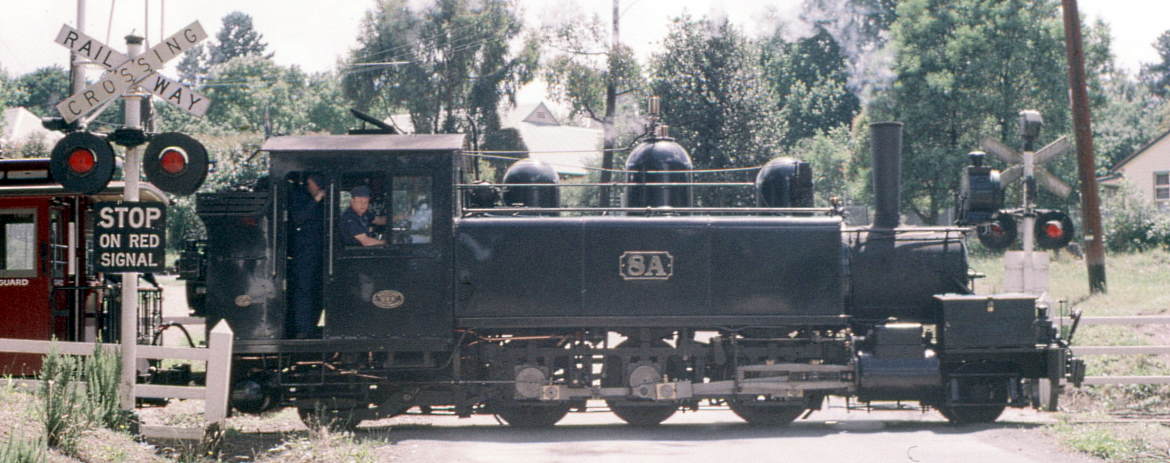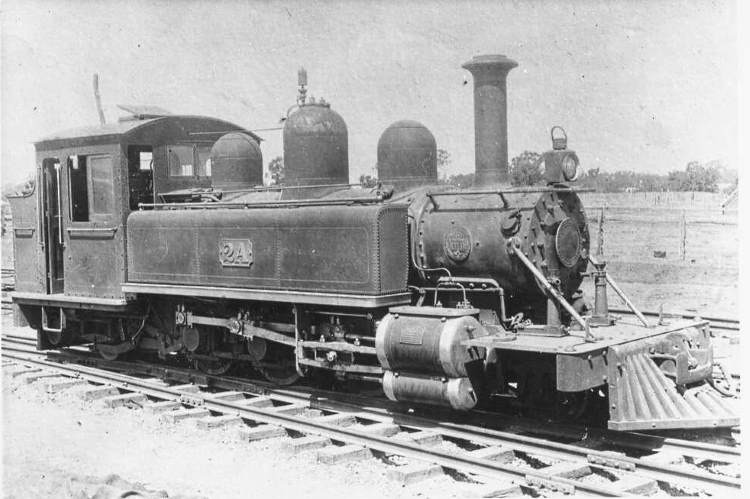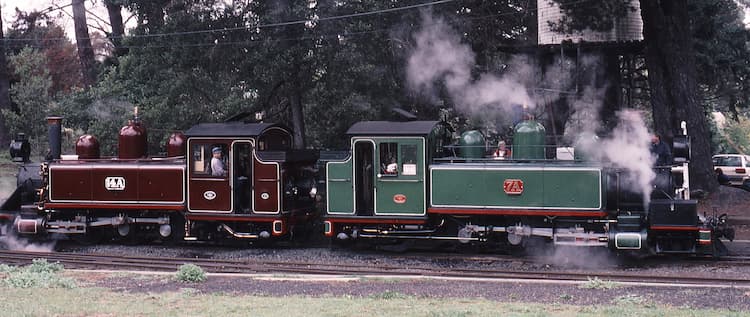
VR NA Class Tank Locos
By 1892 the Victorian Railway network had spread across the State but financial problems in both the private and government sectors lead to a depression that that really began to bite.
Railway construction slowed but the need to connect parts of the State to the capital was still there. The Railway Commissioners were very aware of the cost involved in building and operating branchlines laid to the standard 5′ 3″ gauge and began to look for cheaper options.
A Parliamentary Committee recommended that narrow gauge lines be built in parts of the State and, despite strenuous opposition from the Victorian Railways, five branchlines were ultimately built to a gauge of 2′ 6″.
Tenders were called for the supply of two locomotives for the line to be built from Wangaratta to Whitefield and the Baldwin Locomotive Works of Philadelphia was the successful tenderer.
They were to supply two 2-6-2 tank locomotives. The first loco was to be a simple two-cylinder loco while the second was to be a four-cylinder Vauclain Compound locomotive.

Technical details
While the cylinders were mounted outside the frame, the 36 inch driving wheels were mounted inside the frame and the centre pair of driving wheels were to be flangeless. The total wheelbase was 21′ 10″ while the wheelbase for the driving wheels was 8′
The length of the loco over the couplers was just over 30′ 8″ while the width at the widest point was 8′ 3″. The height from rail level to the top of the smokestack was 10′ 10″. The total weight of the loco was 34 tons 7cwt.
Tractive effort was 10,816lbs for a boiler pressure of 160lbs (12168lbs and 180lb for the Compound loco), coal capacity was 1.5 tones and the water tanks could hold 780 gallons.
More members of the class
Like every Australian State at that time. Victoria was anxious to build up local industries and provide more employment opportunities for people who lived in the State and so the VR had a policy of building as many locomotives in Victoria as possible.
And that policy was applied to the purchase of further NA Class locomotives. 15 more locomotives had been added to the roster by 1915.
Technical details
| Cylinders | 13×18 inches |
| Boiler pressure | 180lb |
| Coupled wheels (diameter) | 36 inches |
| Tractive Effort | 10,816lb |
| Grate Area | 9.03 sq ft |
| Total weight | 34 tons 7 cwt |
| Road numbers | 1A – 17A |
End of the line
4A and 16A were withdrawn in 1933 and both were scrapped in 1936.
10A was withdrawn in 1945.
11A and 17A were withdrawn in 1953.
9A and 15A were withdrawn in 1954.
5A and 13A were withdrawn in 1958.
3A. 6A, 7A, 8A, 12A and 14A are all preserved at the Puffing Billy Railway in Victoria

References
Puffing Billy Railway Website: puffingbilly.com.au/rolling-stock/locomotive-fleet/ . Locomotive Fleet
Downs, E.R. Speed Limit 20, 1963. The Australian Railway Historical Society (Victorian Division), Melbourne. W & K Purbrick, Melbourne
Oberg, Leon. Locomotives of Australia 1850s ~ 1900s, Third Edition, 1996. Kangaroo Press, Australia. Colorcraft Ltd, Hong Kong
The photos on this web page are by Weston Langford.
They are licensed under a Creative Commons Attribution-NoDerivatives 4.0 International License.